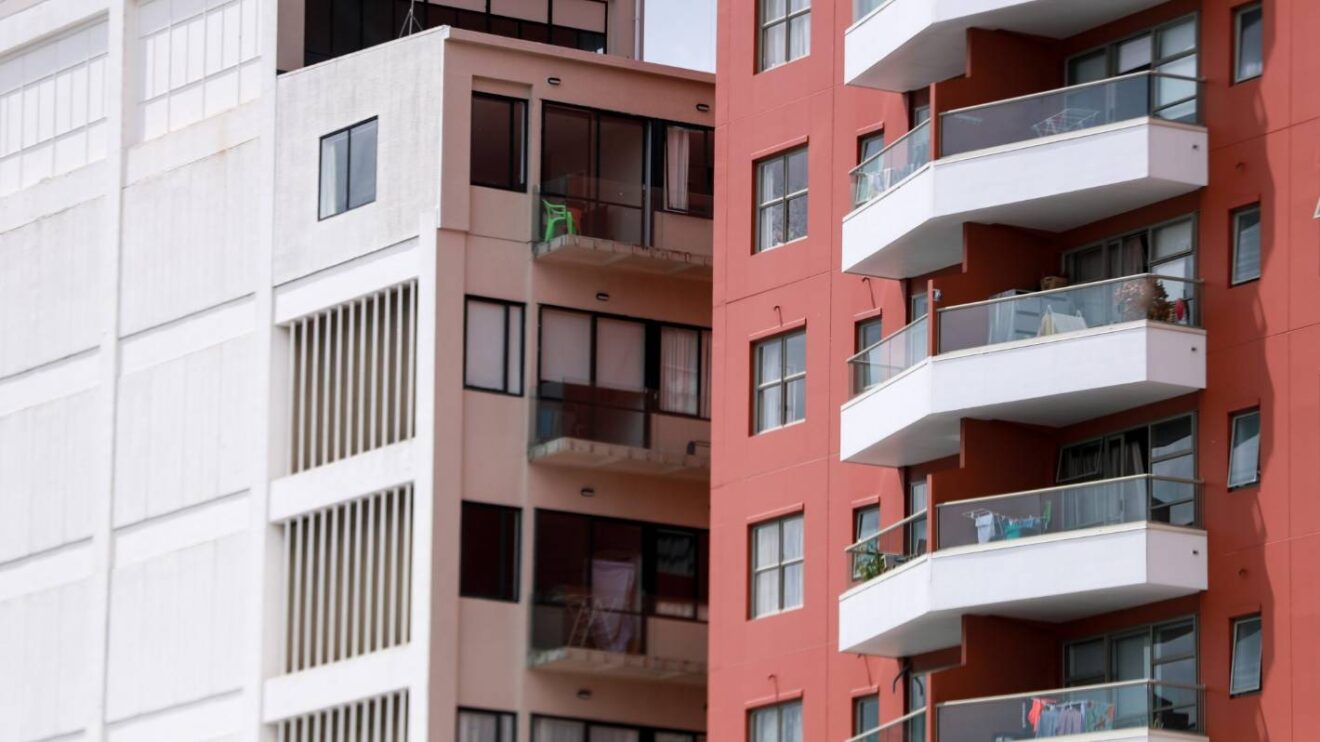Prices fell in 154 suburbs around the country in the three months to February, with 12 down over 5 per cent, the latest map analysis by CoreLogic revealed.
Each of the 154 suburbs had price increases of over 1 per cent, but 94 of them were in Auckland, while 19 in Dunedin, 14 in Lower Hutt, six in Hamilton, five in Kāpiti and four in Porirua.
All suburbs with price falls of over 5 per cent were in Auckland, and a further 12 suburbs, also in Auckland, had falls of over 4 per cent.
Muriwai had the largest quarter drop, with prices down 10.3 percent to a median value of $ 1,337,650. In dollar terms, that equates to a fall of $ 153,600.
READ MORE:
* This is where median home values are below $ 300,000
* House sale for $ 22m in Herne Bay of Auckland was the most popular of 2021: CoreLogic
* Here, house prices have risen by 50 percent
There was no trend as to what kind of Auckland suburbs had price declines, with the analysis showing that they were spread across the region.
They happen in some prestigious suburbs, like Remuera and Epsom, where prices have dropped 2.4 percent and 2.6 percent, respectively, to $ 68,100 and $ 66,200, respectively.
But they also hit some traditionally cheaper suburbs, such as Manurewa East and Auckland Central which had falls of 3.5 percent and 3.6 percent, or $ 31,700 and $ 22,200.
CoreLogic chief property economist Kelvin Davidson said the patchiness of Auckland’s price fall was reflected in other parts of the country, where they were also spread across value bands.
Abigail Dougherty / Stuff
Auckland Central house prices fell by 3.6 percent in the three months to February.
While Auckland was at the top, there were weaknesses in parts of Hamilton, Napier / Hastings, Wellington (especially Lower Hutt), Kāpiti Coast, Dunedin and Queenstown, he said.
“The market has proven highly resilient over the last year, maintaining four growth levels through Covid, snap closures and border closures.
“But it has reached a clear turning point, because extended affordability, higher mortgage rates and reduced credit availability are causing growth rates to slow down, or become negative, in many areas of the country.”
The latest analysis focuses on the three-month price change rather than the annual change used previously, and reflects the impact of changes on lending rates, new lending rules and the spread of Omicron, he said.
It revealed a marked turnaround from the last analysis, in which all 966 suburbs covered an increase in their median value over 2021.
But the results were not all negative. Of the 960 suburbs analyzed, over half (581) had price increases of at least 1 percent over the three months to February.
There were nine suburbs, all on the North Island, where prices rose by at least 10 percent, and another 90 suburbs had increases of between 5 percent and 10 percent.
Fordlands in Rotorua recorded the highest increase, up 15.4 percent, or $ 61,000, at a median price of $ 457,850. It was closely followed by Leigh in Auckland, which rose 15 percent, or $ 192,300, to $ 1,473,850.
JASON DORDAY / STUFF
Herne Bay remains the most expensive suburb of the country with a median price of $ 3,726,900.
In Tauranga and Christchurch, there were no suburbs that recorded price increases.
Herne Bay in Auckland remained the most expensive suburb of the country with a median price of $ 3,726,900, an increase of 3 percent or $ 109,850. Cobden in the Gray District was the most favorable suburb with a median of $ 231,900, up 1.4 percent or $ 3,100.
Davidson said the results were mixed, but were what you’d expect to see as sentiment began to turn, and provided a valuable indicator of the market’s “plateauing” trend.
A soft landing was still more likely than a major downturn, but the market had to adapt to economic uncertainty and higher lending, he said.
“Buyers and sellers will take some time to come to an agreement on where the new market will normally be, leading to a large flat price on a national level. But falls in some areas are offset by increases elsewhere.
Earlier this week, new figures from the Real Estate Institute showed that median prices in the Auckland region have fallen by about 8 per cent since their peak in November, but that some areas have fallen by varying degrees.
On a national basis, the latest quotable value figures had the average national price in February dropped 1 percent to $ 1,053,483, while the last house price index of the real estate institute showed three months in a row of price increases.


Add Comment